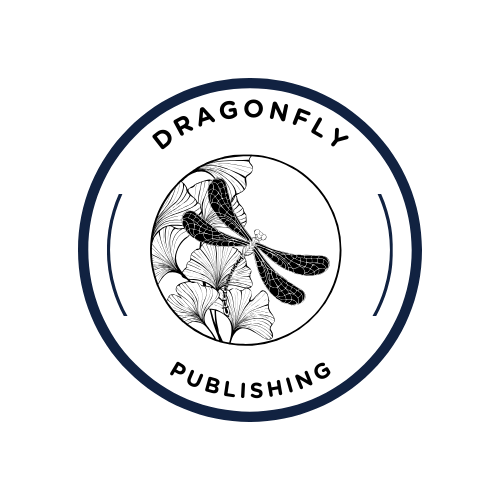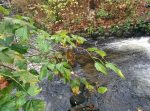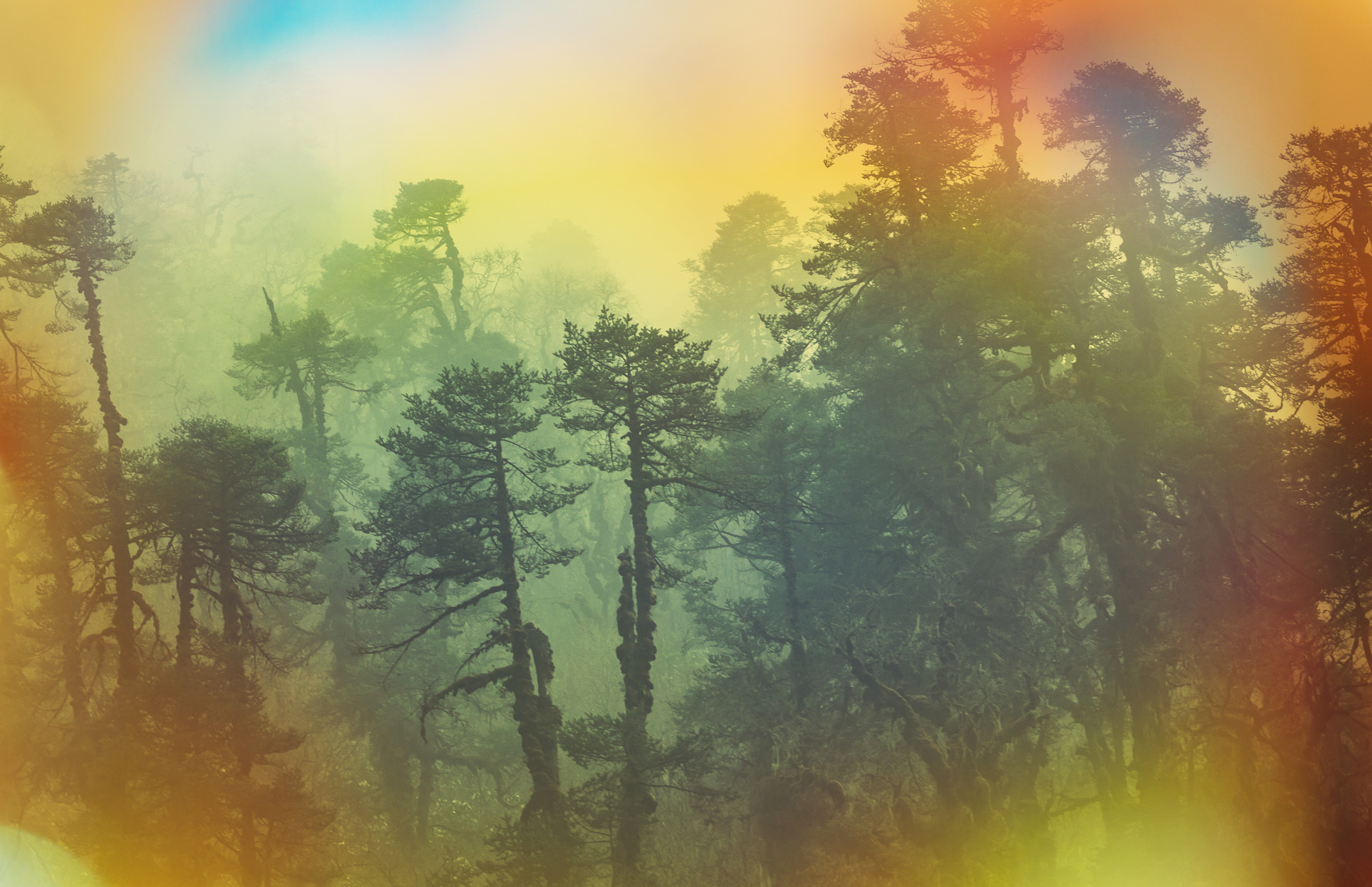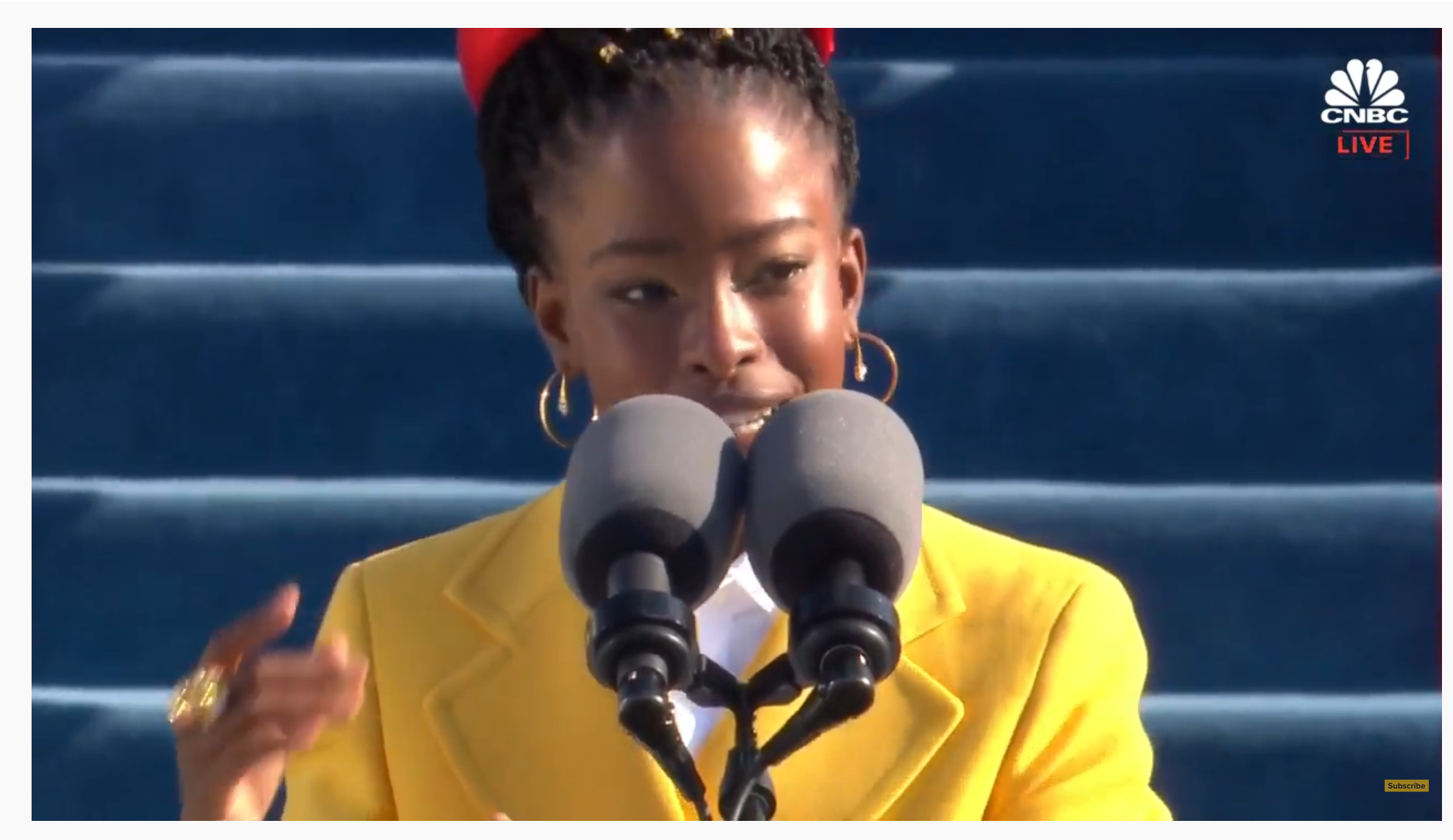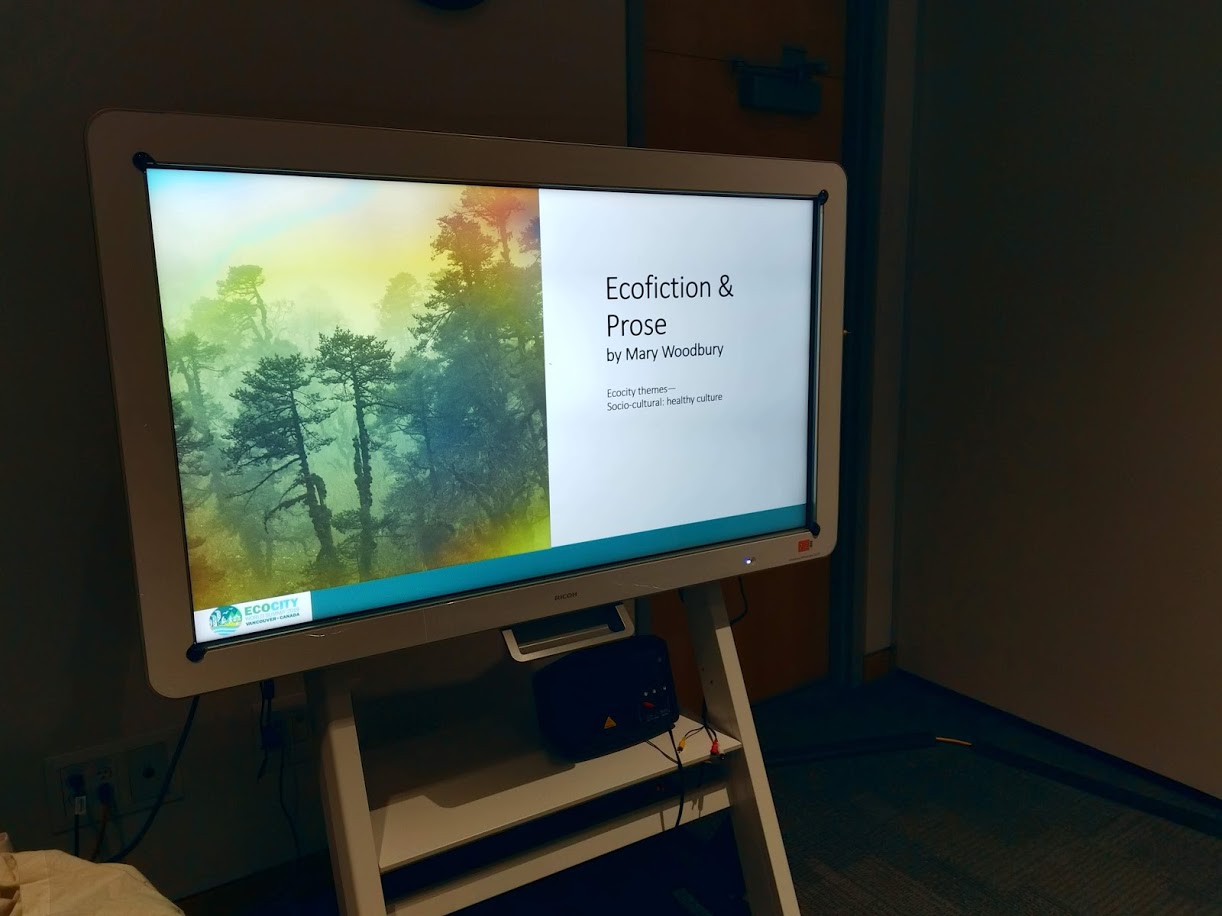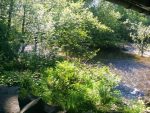“Salmon Come Home” was the theme on Sunday at the Hoy and Scott Creek Festival, which I attended as a volunteer with the Streamkeeper group. Our table was quite popular because not only did we have a couple dead salmon to look at, but we had one more salmon that we dissected for the crowds–mostly to teach kids about the life cycle, and the anatomy, of salmon. One of the smaller salmons–a coho male–had died in the creek; he had tried to return to the creek too early. The larger two male chum salmons had also died, most likely due to stress. The Department of Fisheries and Oceans (DFO) brought the salmons to us so that we could use them to educate the public.

While I did not dissect, I was the right-hand assistant, helping to hold the salmon and occasionally open it up, cutting away cartilage or flesh as the main dissector rummaged through to find organs. We displayed the heart, liver, swim bladder, brain, testes (and milt), and stomach. It was quite interesting to me–a quick course on fish anatomy, the many parts not too surprising. What was surprising was that the fish had stressed before fertilizing any eggs, so the milt was everywhere.
Salmon is an amazing fish. I talked with the one of the DFO guys about warming waters, and he said it’s a fish stress-factor–as well, we have to remember that it can add stress for all species, down to plankton, so if that is getting stressed and dying, along with any other food source for salmon, then that also will affect the fish’s life.
Salmon are unique in that they are anadromous (some are not, however), meaning that they can live in freshwater and then evolve to be able to live in salt water, and then return to freshwater. Their lives start when the female lays eggs on gravel in freshwater rivers, and then the males come along to fertilize those eggs. This marks the parents’ end of life, after they spawn, and they die in the water, which nourishes the streams and creeks with rich nutrients to abet in the healthy atmosphere of the salmon that hatch.
The eggs are generally laid late summer to early and mid-fall (depending on species and river). In about three months, the eggs will hatch and form little tails. Alevins are still carrying the yolk. Within about 5-10 weeks you see small fish, called frys, which develop finger markings within a few months. Within 1-3 years, depending on river and species, the salmon are called smolts. They gather in groups and start to head to the salt-water ocean. They can spend anywhere from 1-8 years at sea before returning, as adults ready to spawn, to their natal creek or river, where they will, like their parents, do their spawning activity. How do they find their way? It may be due to a magnetic mapping innate to them. Salmon will imprint on this map, later helped by olfactory cues or perhaps other senses.

The energy it takes to get up stream (we’ve all seen photos of salmon jumping upstream or up fish ladders) is amazing. It’s also during this return to freshwater, when salmon begin their spawning trip, that we start to see the brilliant red color of the sockeye and the orange-red of the coho.
Anyway, I had a wonderful day. I ran home from the festival and was pretty exhausted by then (I had spent the night before rearranging the living room furniture by myself–in preparation for our upcoming Thanksgiving gathering) and had stood all day, bent over a salmon for a couple hours!
Speaking of salmon, there are some possible amendments to the Fisheries Act in Canada. To learn more and even complete a survey, please see “Let’s Talk Fish Habitat“. Note that registration is required.
